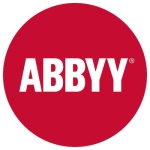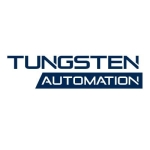What is our primary use case?
I use both the on-premise version and web versions because they both have different tools. I use them both for different use cases and different scenarios.
I use Microsoft Power Automate to make reports and web scraping. I automate the reports with the desktop version because it works well. I use Microsoft Windows, to do some commands in the CMD, also known as the line assistant. When it comes to the web version, I mostly do reminders, scraping, extracting data from emails, and creating ticket systems. I take that data and put it in a list or create a table in Excel to extract information and automate that part.
How has it helped my organization?
Microsoft Power Automate has helped our organization by making processes faster. I do some consulting on the side about Microsoft Power Automate. We realize we don't need as many people to work on something because you can automate it or at least semi-automate the tasks.
What is most valuable?
The most valuable feature of Microsoft Power Automate in the desktop version is web scraping because you can do a lot with it. I work in retail and you can study prices changes, which can give you a lot of information. The solution is no code which is a large advantage.
In the web version, the most valuable features are creating tickets, taking email information, and creating a ticket with it, similar to an IT ticket.
Microsoft Power Automate is a tool that is easy to learn. There is some basic logic that you will have to understand but overall it is not complicated.
What needs improvement?
I think the language Microsoft Power Automate uses when you do expressions could be better. What they use is not a popular programming language. It would be better for Microsoft to find a more popular programming language, such as Python. It would take away the whole no-code aspect of the solution but you don't need to write that many lines of code to improve something in a process. Instead of no-code, they could be a low-code environment.
For how long have I used the solution?
I have been using Microsoft Power Automate for approximately seven months.
What do I think about the stability of the solution?
The stability of Microsoft Power Automate is good, I have not had a problem with the performance.
What do I think about the scalability of the solution?
Microsoft Power Automate is scalable.
We have approximately 10 people using this solution in my organization. The solution is moderately being used. The more you use it, the more ideas come to you of what you can automate or what can you create. In the future, it's going to be used more.
How are customer service and support?
I have not contacted the support from Microsoft.
How was the initial setup?
The implementation of Microsoft Power Automate was straightforward. It took only hours to do the full implementation.
What about the implementation team?
I did the implementation of Microsoft Power Automate in my company. Additionally, I do the maintenance and patching of the solution when needed.
What's my experience with pricing, setup cost, and licensing?
The cost to use Microsoft Power Automate is approximately $15 per user per month, for the basic plan. However, the solution comes free with the Microsoft 365 Suite.
You have to pay extra for the scheduling of the automation tasks.
Which other solutions did I evaluate?
Microsoft Power Automate is a newer solution to the market. UiPath is a lot more popular and has more features than Microsoft Power Automate. There's a lot of potential in that Microsoft Power Automate because it connects well with other Microsoft programs inside the Suite which makes it even more powerful. UiPath connects with other applications, but the fact that if you use Microsoft in your organization, it's more seamless. It works better.
What other advice do I have?
I learned Microsoft Power Automate faster because I know how to use Microsoft Excel, and that teaches you how to think more logically when it comes to computers. If you have an Excel or programming background, it's going to be easier because the logic creates the flows. If you won't want your learning curve to be that steep, I would recommend learning Microsoft Excel and then going Microsoft Power Automate. You will have more ideas of what you can do with the tool.
I rate Microsoft Power Automate a nine out of ten because you have to pay to receive the schedule functionality of the automation, which is important.
Disclosure: My company does not have a business relationship with this vendor other than being a customer.

















